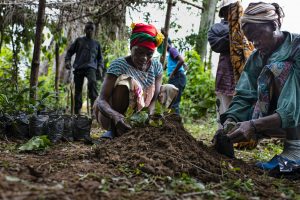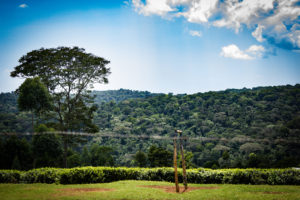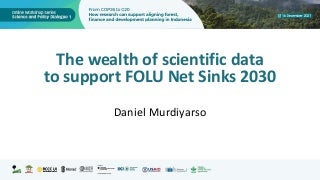
African community leaders know that women play essential roles in restoring land and forests, even though it is not always easy for them to contribute.
However, do high-level decision makers grasp the unrealized potential of women’s leadership? Taking cues from grassroots experiences can help regional restoration initiatives improve their chances of success.
Late last year, African community leaders put together a manifesto that underscores how important communities are for successful restoration. It also provides cues on how to accelerate restoration in Africa, with two points explicitly calling out the need to include women on equal footing with men.
Strengthening women’s tree and land tenure rights as well as ensuring equitable distribution of benefits from forests will be crucial, according to the manifesto. Its recommendations build on 12 success stories collected from women and men working to reverse degradation across the continent.
The notion of equality as crucial for progress resonates as International Women’s Day on March 8 draws near, with this year’s theme encouraging us to think equal and build smart. But how can community experiences help build smarter restoration initiatives?
Read also: Communities restoring landscapes: Stories of resilience and success
Women show leadership and commitment
The AFR100, the African Forest Landscape Restoration Initiative that seeks to recover 100 million hectares of currently degraded land in Africa by 2030, is one effort that could benefit from grassroots experiences. Esther Mwangi, the CGIAR Research Program on Forests, Trees and Agroforestry (FTA) and Center for International Forestry Research (CIFOR) scientist who collected the 12 success stories, explained:
“Many regional or global policy processes, like AFR100, risk missing the point because they are top-down, often defined by governments. Governments are important, but what matters for restoration is what happens on the ground. The stories document what communities already know about what tends to work.”
Many of the stories portray women who display outstanding leadership in restoration, which is interesting as women lack the tenure rights that would give them access to long-term returns.
One reason for women’s commitment is that impacts from forest or land degradation often hit them the hardest, leaving them no choice but to act. This is the case on Cameroon’s eastern coast where, as one story recounts, mangroves are being exploited for fuelwood and timber, mostly by men. For women, this has meant losing access to fish, fruit and nuts used for food or income.
Aiming to restore these past benefits, women are willing to invest in replanting trees, even though only men can own the land on which the mangroves grow. Without land rights, women can only hope that the restored mangroves are eventually inherited by their sons.
That women are arguably more organized than men and better at collaborating on restoration is another lesson to be learned. A case in point is Kenyan woman Zipporah Matumbi who has a decade-long track record of mobilizing women in her community to protect and restore forests. When she launched her efforts, many women were initially reluctant to plant trees in case it was interpreted as putting a claim on land that customarily belongs only to men.
However, over time, Matumbi managed to normalize the idea that women can plant trees, and today women are able to capitalize on their efforts, for example by selling tree trimmings as fuelwood and spending the income on educating their children. Matumbi said that is why women are planting trees – because they are thinking of tomorrow.
Read also: Local communities a driving force behind recovering Africa’s landscapes

Empowering women to contribute
While the stories show that there is huge potential for women to lead successful restoration efforts, not many women are able to contribute to or benefit from such initiatives.
“When the community leaders wrote that manifesto, they were right on target,” said Mwangi. “It is like [former US president Barack] Obama once said, about having a whole team, but only letting half of them play. That doesn’t make sense. When you bring in women, you’re bringing in the other half — knowledge, skills, motivation and leadership.”
The problem is that empowering women to contribute is not always simple. Women’s lack of land tenure and rights, as illustrated by some of the success stories, are one challenge. Policies that give women rights equal to those of men are important. Otherwise, hardworking women are easily exploited by contributing to reforestation and restoration efforts without access to the benefits.
That being said, rights are not the only critical factor. Many other entry points exist for improving women’s opportunities.
For example, providing water and sanitation facilities can free up women’s time to plant and look after trees and attend meetings and training. Training women on how to negotiate with men can give them access to benefits and reduce the amount of time spent on household chores (which are often allocated by men), giving women opportunities to demonstrate their leadership skills, which can change how men see them.
Working with men can also help to address crucial gaps in managing restoration initiatives, such as monitoring to keep seedling predators at bay or apprehending the unsanctioned harvesting of grown trees. Additionally, providing viable, long-term livelihood alternatives can enable women and men to ease pressure on forest and land resources.
AFR100 and similar initiatives can greatly benefit from understanding how such actions can start to shake up gender norms, slowly allowing women to play a greater role and thus increasing the chances of long-term restoration success.
Communities give directions for road ahead
Communities’ experiences can also serve as a starting point for more research on the complex dynamics between gender and restoration.
“For me as a scientist, these stories give me a really good starting point. They provide research questions I can ask and hypotheses I can test – for example on women-targeted incentives or on leveling the playing field. That means I might eventually be able to share more rigorous evidence on what difference women make to restoration, and that can inform future initiatives,” Mwangi said.
The stories reinforce FTA’s priorities to improve gender equality by focusing on structural barriers and drivers of change. When well understood, such barriers can be overcome and changes made, allowing women to meaningfully participate in restoration, access benefits and contribute to decisions about how forests and land are used.
Through the manifesto and stories, communities are showing how to equitably expand opportunities for both men and women to restore and benefit from forested landscapes.
By Marianne Gadeberg, communications specialist.
This research is part of the CGIAR Research Program on Forests, Trees and Agroforestry (FTA). FTA is the world’s largest research for development program to enhance the role of forests, trees and agroforestry in sustainable development and food security and to address climate change. CIFOR leads FTA in partnership with Bioversity International, CATIE, CIRAD, INBAR, ICRAF and TBI. FTA’s work is supported by the CGIAR Trust Fund.











